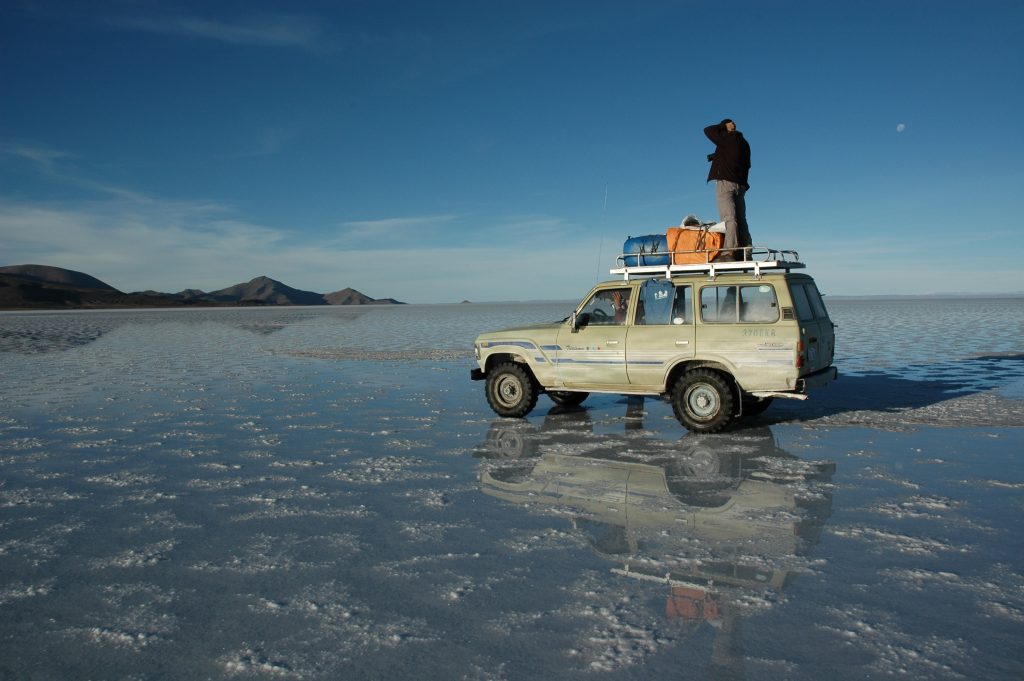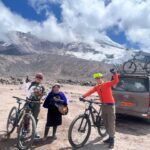Bolivia Salt Flats: Best Things to Do in Uyuni
 by Tom Shearman on 18th September, 2024
by Tom Shearman on 18th September, 2024
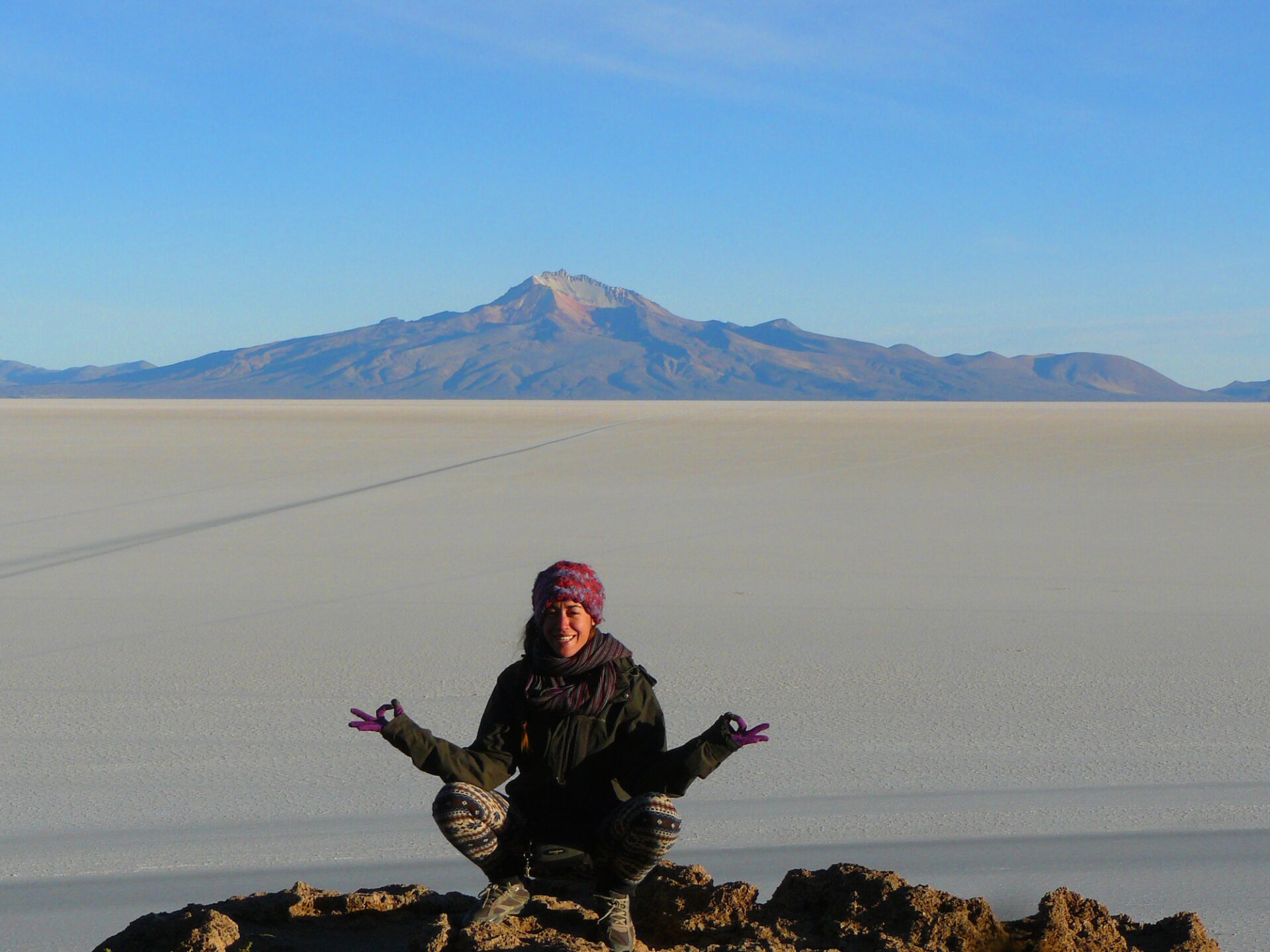
Guide to the Best Things to Do in Uyuni, Bolivia Salt Flats
The Bolivia salt flats attractions are many. Here’s our guide to the best things to do in Uyuni.
What Are Bolivia Salt Flats Famous For?
Bolivia’s salt flats are called Salar de Uyuni. These are the world’s largest and highest salt flats, being almost six metres deep and covering 4,633 square miles / 12,000km2 at 3,700m/12,139ft.
This harsh but beautiful environment is one of South America’s gems. People enjoy incredible sunrises and sunsets at Uyuni, situated in Bolivia’s southwest.
The rainy season turns Uyuni’s salt flats into a gigantic mirror, reflecting wispy clouds, the celestial blue sky by day, and an astonishing floor of stars at night. It’s like walking through the heavens.
The area’s unusual geography allows people to take jaw-dropping photos. Against the pure white backdrop, you can make your friends and family look gigantic or tiny.
That’s before we mention its different-coloured lakes that look like they are under a spell, the Andean flamingos that call Uyuni home, and that battle scenes from Star Wars VIII – The Last Jedi were shot here.
Uyuni is home to giant lithium reserves, crazy cactus islands, mesmerising rock formations, and some hardy wildlife. It really is like nowhere else on Earth.
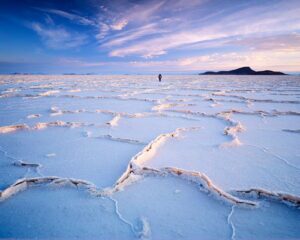
How Many Days Do You Need in Uyuni Salt Flats?
A day trip can give you a taste of the Uyuni Salt Flats, but three to four days is ideal to truly explore Bolivia’s salt flats. Guided Uyuni tours can take you to the highlights, and you’ll have the chance to stay in a salt hotel made from the region’s abundant natural resource—salt.
Top tips for Uyuni Salt Flats
Remember that Uyuni Salt Flat tours take you to one of the world’s most extreme environments. Be prepared for your visit by following these top tips.
- Take good-quality and warm clothes to deal with the cold temperatures.
- Prepare yourself for harsh conditions like intense sun and freezing nights, but remember that the rewards are plentiful.
- Acclimatise well to high altitude before arriving at Uyuni.
- Hire an English-speaking guide to enhance your visit—the history is fascinating, and you’ll most likely only visit once, so make the most of it.
- Good quality vehicles are important on what is essentially a driving trip with stops.
- Be sure to wear those warm clothes to leave your hotel and gaze at the incredible star formations.
- The 3-4 day trips allow you to enjoy Uyuni’s main attractions.
- Combine your Uyuni Salt Flats tour with San Pedro de Atacama in Chile for the ultimate visit to this region.
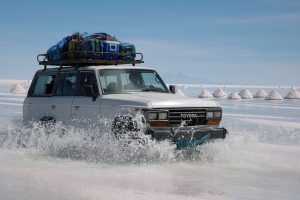
Are the Uyuni Salt Flats Worth Visiting?
Highlights and attractions on Bolivia salt flat tours are abundant. It’s not just about the sites; being on the Uyuni salt flats is an unrivalled experience. The feeling of solitude, otherworldliness, and the wonder at how humanity has carved out a living in this extreme environment is inspiring.
The colours, the sound of the wind, the warmth of the sun as it rises, and the illuminated emptiness of the galaxies overhead at night leave ever-lasting impressions on the soul.
What Sites Should I Visit on a Uyuni Salt Flats Tour?
Here are the top attractions to include on your Uyuni salt flats tour:
- The iconic stone tree.
- Colchani salt factories.
- Los Ojos del Salar, bubbling pools where salt water meets sweet.
- Isla Incahuasi, the famous cactus island of Uyuni.
- The Siloli Desert, where the “earth meets the sky”.
- Volcano Thunupa and its museums of ceramics and mummies.
- Salvador Dali desert and its bewitching colours, sands, and rock formations.
- The Red Lagoon and its nearby geysers.
- Chalviri desert and salt flat with its sharp colours.
- Hot springs at Polques.
- Charagua and its farmers.
- Lagunas Cañapa, Hedionda, Chiarkota, Honda, and Ramaditas.
- Uyuni train cemetery.
- The Green Lagoon standing at the foot of Volcano Licancabur
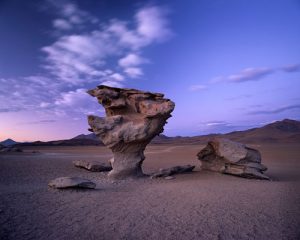
What’s the Best 3-Day Uyuni Salt Flats Tour?
One of the best three-day Uyuni salt flat itineraries includes the following highlights. Stay at salt hotels, use a good quality 4×4 vehicle, and an English-speaking guide.
Day 1: The northern territories:
- Uyuni to Colchani salt factory
- Incahuasi Island
- Pucara Chillima
- Tahua village
- Volcano Thunupa
- Chantani Museum
- Coquesa Mummies museum
- Tahua Salt Hotel
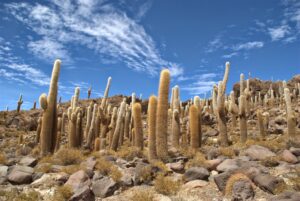
Day 2: Heading to the southern territory:
- Ojo de Perdiz
- Charagua
- Cañapa, Hedionda, Chiarkota, Honda, and Ramaditas Lagoons
- Siloli Desert
- Hotel Takya of the Desert
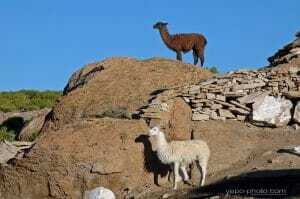
Day 3: The far south, return to Uyuni:
- Ojo de Perdiz
- Stone Tree
- Salvador Dalí desert
- Red Lagoon
- Geiser Sol de la Mañana
- Green Lagoon and Volcano Licancabur
- Return to Uyuni or on to San Pedro de Atacama
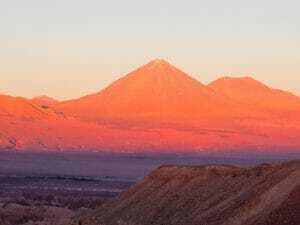
Bolivia Salt Flats Attractions: Best Things to Do in Uyuni
Read more about the best things to do in Uyuni.
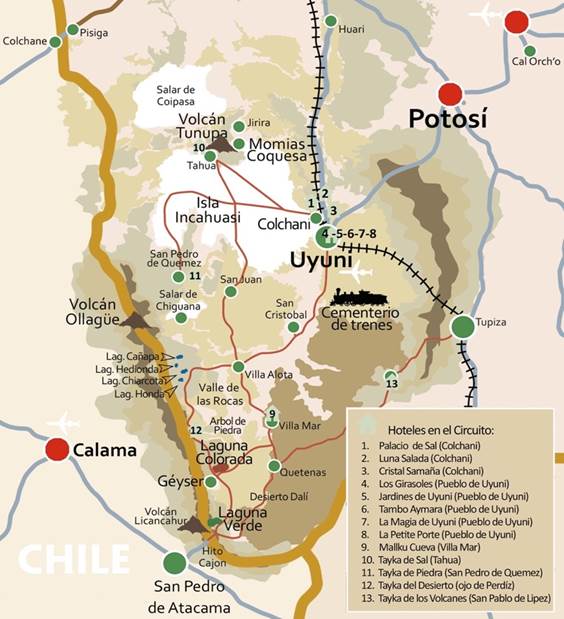
Top Attractions Close to Uyuni and the North
These are some of the best things to see and do in and around Uyuni and to the north of the Salar’s principal town.
Avenida Ferroviaria, Uyuni
Anyone passing through Uyuni will no doubt walk along Avenida Ferroviaria, a step back in time.
Modern-day hotels, banks, and restaurants vie for attention among old trains and monuments. It’s worth a walk, if only for 20-30 minutes.
Museo Arqueologico y Antropologico de los Andes Meridionales, Uyuni
This small museum walks you through (Spanish) descriptions of the ancient cranial deformation practices. Long skulls and mummies illustrate the point. There are also ceramics and textiles.
Train Cemetery (Cementerio de Trenes)
Almost all Uyuni salt flat tours stop at the Train Cemetery (Cementerio de Trenes) on the southern outskirts of Uyuni.
This ghost station is home to locomotive shells, many rusting from the salt from the nearby salt flats. These graffiti-sprayed trains used to haul wagons full of gold, tin, and silver to Antofagasta in Chile during Bolivia’s golden age. Now, they entertain visitors, with one even converted into a swing.
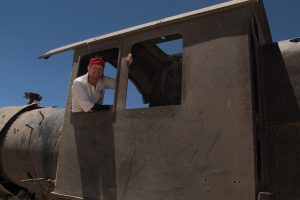
The following attractions lie to the north of Uyuni.
Colchani Salt Farms
Colchani is the central point for Uyuni’s salt factories and just outside the town of Uyuni. A visit here reveals how people farm and depend on the salt surrounding them.
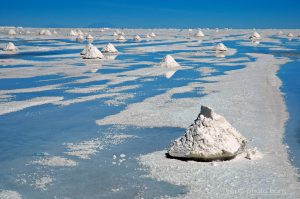
Ojos del Salar
Just west of Colchani lies Los Ojos del Salar, a natural wonder. Underground rivers and air push their way to the surface at the Los Ojos del Salar site, creating bubbling natural lagoons.
Tunupa Volcano
Tunupa Volcano (5,321m/17,457 ft) rises above the white salt, a multi-coloured top accessible to mountaineers only.
Most people visit its viewpoint at 4,724m/15,500ft, and the two nearby museums, the Chantani Museum and Coquesa Mummies Museum, both house ceramics and mummies.
The volcano lies in the far northwest of the Uyuni salt flats, just north of Isla Incahuasi.
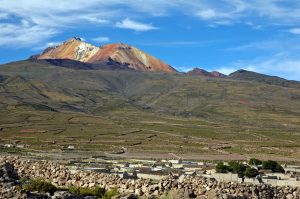
Isla Incahuasi
Incahuasi Island is a petrified coral island that rises from the salt flats to offer beautiful 360° views. Incahausi is covered in cacti that grow up to ten metres in height, creating a unique atmosphere.
Due to its proximity to Uyuni, Incahuasi is a popular stopping point, with bathrooms and a small museum. The nearby flats are perfect for playing with perspective with photographs.
Fish Island (Isla del Pescado)
Close to Incahuasi lies Fish Island, which is similar to Incahuasi but smaller and less crowded.
Fish Island earned its name during the rainy season. The flooded salt flats make the island look like a fish breaking through the water’s surface. Come here to see cacti, views, and fewer people than at Incahuasi.
The Central and Western Highlights of Uyuni
These highlights are to the west of Uyuni, towards the centre of the region, and usually visited on the second day of a three-day tour.
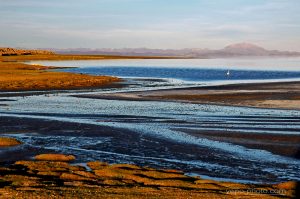
Necropolis and Museum Kawsay Wasy
The small village of San Juan houses the Necropolis and Museum Kawsay Wasy.
Here, Uyuni’s history is revealed, with a range of tombs and mummies helping explain how people survived and treated their dead.
Laguna Hedionda, Charcota, Cañapa and Laguna Honda
These lagunas are often visited together, thanks to their close proximity.
Each saltwater lake has a different personality. Laguna Hedionda creates a mirror for the snow-capped mountains that surround it, while Laguna Honda’s 10cm depth creates playful images.
Siloli Desert (Desierto de Siloli)
This high-mountain desert (4,500m/14,764ft) is known as the place where the “earth meets the sky”.
This desert is covered in ridges and volcanoes; the road is gravel and sand. Strong winds that buffet the Siloli Desert have sculpted stunning rock formations.
The most famous is the Arbol de Piedra or Stone Tree. With its tree shape, this rock stands defiant still against the wind’s tormenting ravages, a unique testament to nature’s power.
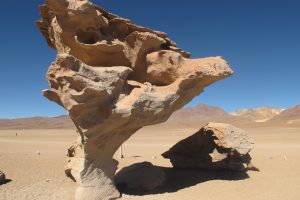
Valle de Rocas (Rock Valley)
The Valle de Rocas forms part of the Siloli desert, a 10-mile stretch of beautiful rock formations within the Eduardo Avaroa National Andean Wildlife Reserve.
People have named many of the unlikely formations in Valle de Rocas, which lies adjacent to the Uyuni salt flats, according to their appearance. These include the camel, the World Cup trophy, and the fish.
The Southern Highlights of Bolivia Salt Flats
These sites are the furthest away from Uyuni, and take a day or two to reach. For that reason, they are often included on the last day of three-day tours.
It’s from this southern point that people can choose to cross the border into San Pedro de Atacama via the Hito Cajones border crossing.
Green Lagoon (Laguna Verde)
The Green Lagoon sits at the foot of the impressive Lincabur Volcano (5,920m/19,423ft), which marks the border with Chile.
This green-coloured lake reflects the mighty Lancabur, and alpacas and vicuñas roam freely along its shores.
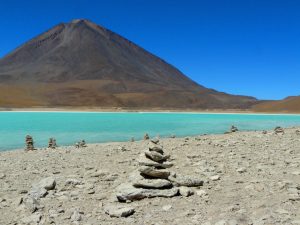
White Lagoon (Laguna Blanca)
The minerals of Laguna Blanca lend it its white, reflective aspect, which mirrors the mountains and sky.
Laguna Colorada or Red Lagoon (Laguna Roja)
Laguna Colorada, or the “Coloured Lake”, is a treat for the eyes. The lake changes colour during the day and weather, thanks to how its sediments and algae reflect light.
Add pink flamingos, llamas, and vicuñas around this reddish-brown lake, with the blue sky and snow-capped Andean peaks, and it’s easy to see why Laguna Colorada is so beautiful.
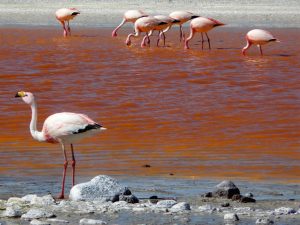
Geiser Sol de la Mañana
These geysers create one of Uyuni’s more unearthly attractions. A desert area is punctuated by geysers spraying hot water and steam up to 50 metres in the air.
Geiser Sol de la Mañana is found near the coloured lakes south of Uyuni and is the highest point of many tours, at 5,000m/16,404ft. The height is another reason the geyser visit often comes later in tours, to give people more time to adjust to the altitude.
Polques Hot Springs (Aguas Termales de Polques)
Close to the Sol de la Mañana geysers are the hot springs of Polques. Visitors can soak and warm their bones in the hot springs here.
Bring swimwear and something warm to wrap up; while the waters are relaxingly warm, the outside temperature is cold in this area. Morning is the best time to visit the springs when they are more active. There’s a fee for using the changing rooms.
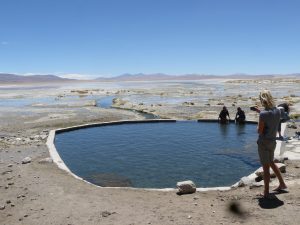
Salvador Dalí Desert
The surrealist artist never visited this desert, but his abstract works wouldn’t look out of place in these landscapes.
San Cristobal de Lipez
The entire San Cristobal de Lipez village, including the 17th-century church, was moved 8km from its original spot to make way for a mine.
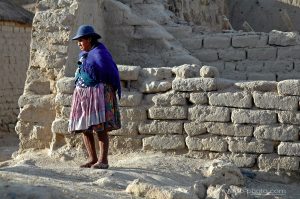
Weather in Bolivia’s Salt Flats: When’s the Best Time to Visit Uyuni?
The best time to travel to the Uyuni Salt Flats depends on what you want to see.
The winter months of June to November are when the salt floor is (almost) completely dry.
- Cold and starry nights.
- Night temperatures to drop between -10° to -15°C.
- Sunny, dry days.
- Clear air for excellent views and photographs.
- Crystal clear and white salt flats
The summer months (Dec-May) are also known as the rainy season.
- Salt flats filled with water create an optical mirror effect.
- The salt flats themselves are soft and may be muddy in places.
- Cloudy, warmer, and rainy days (especially January to March)
When Can I See the Mirror and Reflection at Uyuni Salt Flats?
December to March is the best time to see the mirroring optical effect with reflections on the Uyuni salt flats.
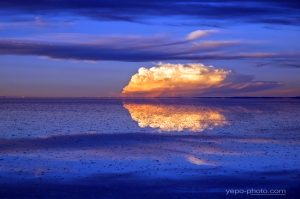
How Much Does It Cost to Go to Uyuni Salt Flats?
Prices vary, depending on several factors. The cheapest, backpacker tours use older vehicles and a Spanish-speaking driver who may or may not offer some guidance about what you are seeing. Food, accommodation, and conditions are basic.
Professional tours, such as our three and four-day options, have the option to include English or Spanish-speaking guides, plentiful food, comfortable 4x4s, and stays at the iconic salt hotels.
We offer Bolivia Salt Flat tours starting from USD 710pp (September 2024, price subject to change).
Weigh up the differences between budget and organised tours.
How Do I Get to Uyuni Salt Flats?
The town of Uyuni is the starting point for most Uyuni salt flat tours. You may need to overnight in Uyuni before your salt flats tour starts because the trips usually depart in the morning.
Uyuni can be accessed by flying from La Paz, which is the quickest way. Overland, take a bus from La Paz to Oruro and then a train or bus to Uyuni. Some Uyuni tours start in La Paz. You can also take a bus from Potosi to Uyuni.
Some people start their tour in the south of Uyuni, crossing the Chilean border at Hito Cajones. Most people crossing from Chile into Bolivia have set off from San Pedro de Atacama.
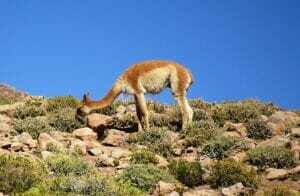
What’s the Altitude at Uyuni and the Salt Flats?
The altitude varies between 3,500-5,000m (9,843/16,404ft) on Uyuni salt flat tours, depending on which attractions you visit.
The highest point is usually Tunupa Volcano. Tours to the volcano can reach 5,000m+, depending on the exact itinerary.
Geiser Sol de la Mañana is found near the coloured lakes south of Uyuni and is the highest point of many tours, at 5,000m/16,404ft.
What Should I Wear on a Uyuni Tour?
You’ll need lots of warm clothing for the freezing nights and garments to protect you from the powerful Andean sun while visiting Uyuni. Include:
- Thermals
- Down jacket
- Windproof jacket
- Hat and gloves
- High UV protective sunglasses
- High-factor sun cream/block and lip balm
- Decent trekking shoes
- Warm, woolen socks
- Neck bandana
- Long-sleeved T-shirts and trousers for protection from the sun
- A decent hat
Check our full kit list.
Visit San Pedro de Atacama From Uyuni Salt Flats
San Pedro de Atacama in Chile makes the perfect place to acclimatise before heading into Uyuni or cross after your Uyuni tour finishes.
We have tours that start or end in San Pedro de Atacama, crossing the border at Hito Cajones. Vehicles do not usually cross the border.
You usually arrive at the border in one vehicle, cross the basic border, and then take a different vehicle. San Pedro de Atacama tours are more expensive than a standard Uyuni salt flats tour because of the logistics, but the overland crossing saves a lot of time and money flying.
Bolivia Salt Flats Attractions: Best Things to Do in Uyuni
These are the highlights of the Uyuni salt flats. Check itineraries for what’s included, and ask about a private tour if you wish to spend more time in certain areas.
Visiting the salt flats can be demanding. Our tours help make you as comfortable as possible in this hostile yet beautiful environment, which showcases Bolivia at its finest. Contact us for more.
